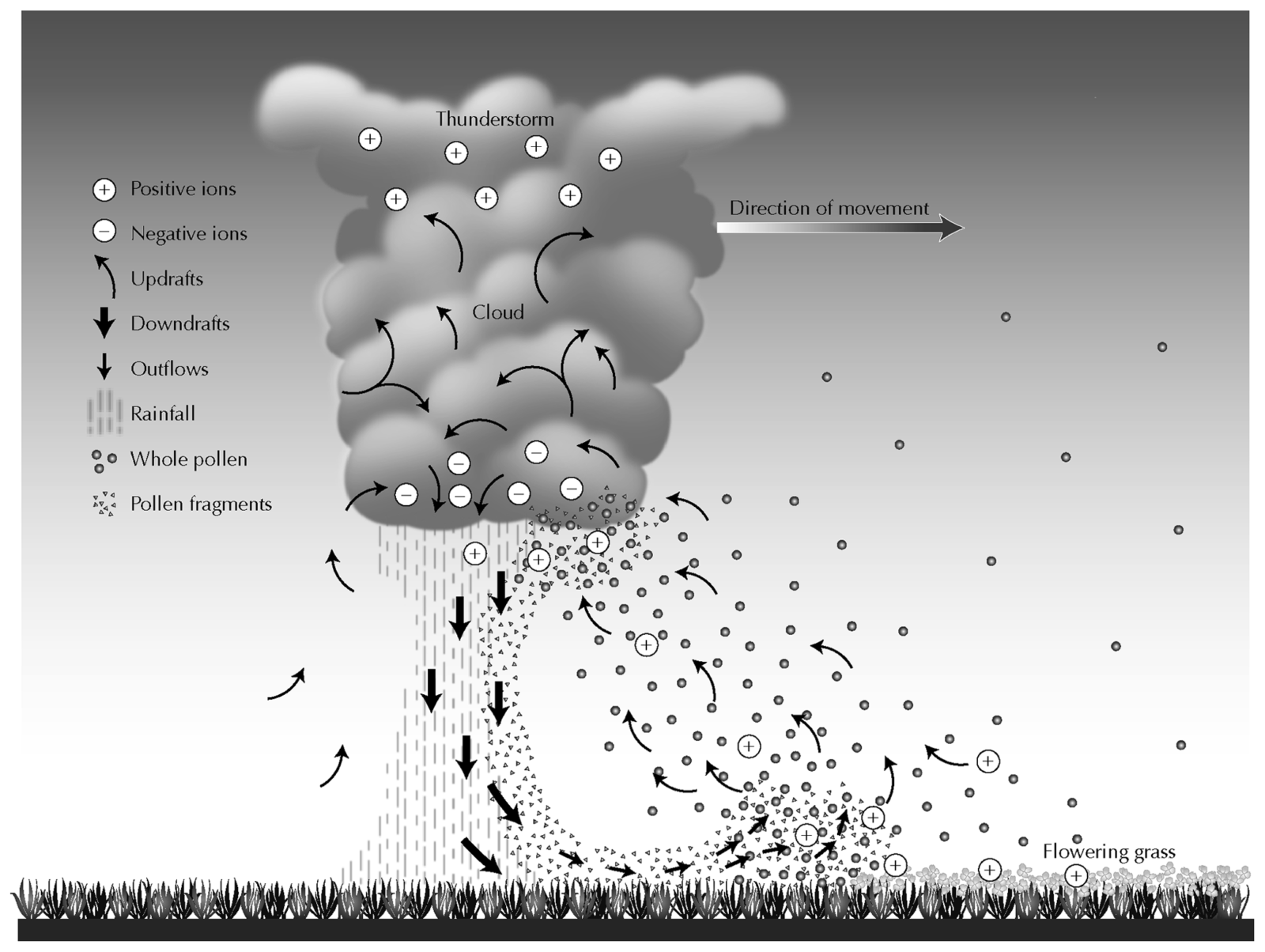
In October 2015 a series of massive thunderstorms rolled across the Eastern Mediterranean. In the hours and days that followed many people living along the Israeli coast had to go to their nearest medical centre because they were experiencing respiratory problems, which appeared very similar to asthma. But what could have caused these breathing problems? Well in research recently published in Natural Hazards and Earth System Sciences, Yoav Yair and their co-authors reveals that these people were probably suffering from thunderstorm asthma.
Thunderstorm asthma is a rare condition, where a severe thunderstorm can increase the number of airborne particles, including pollen and pollution. In the case of the pollens, the high humidity and pressure of very large thunderstorms can cause the pollen grains to break apart, releasing the allergens to the atmosphere in much higher concentrations than normal. These allergens are then forced back down to ground level in powerful downdrafts. In desert areas these downdrafts are often very visible as they also collect dust and other tiny particles to form dust walls or ‘haboobs’ that travel out ahead of the storm.
If the thunderstorm happens during a time of year when there is pollen in the air anyway (usually in the spring or summer) the massive increase in pollen-based allergens can cause thunderstorm asthma. Grass pollens are particularly bad offenders here, as the pollens are too large to cause severe allergic reactions normally (usually resulting in milder symptoms like hayfever) but the combination of heavy rainfall AND the pressure and humidity of the storm cause the pollen grains to break apart and release a major allergen. In addition to the allergic reactions caused by the pollen fragments, the lightning itself could make the problem worse, as intense lightning creates atmospheric oxides like ozone. You may recognise these atmospheric oxides as the sizzling smell you can sometimes detect when a lightning storm is nearby. In large enough amounts, ozone can also cause respiratory problems, which just adds to the issues faced by people who are sensitive to these conditions.
Outbreaks of thunderstorm asthma have been recorded in the past, the most significant being in Melbourne, Australia in 2016 where over 3000 people were hospitalised after an enormous series of thunderstorms in the peak summer pollen period caused an epidemic of thunderstorm asthma. The surprising thing about the case recorded in Yair’s recent research was that this case of thunderstorm asthma in the populated coastal region of Israel happened in the autumn…
So how do you know if thunderstorm asthma could have happened? Yair et al have identified several key characteristics:
- The pollution levels should be low, whilst pollen counts should be high
- The thunderstorm should have a strong electric field, high humidity and very heavy rainfall
- After the thunderstorm, a reported increase in respiratory difficulties should occur within hours or days
- These respiratory problems will be experienced even by people who don’t have a history of asthma
The 2015 thunderstorm in Israel was extremely large, with cloud heads reaching 17km in height and with a high frequency of lightning strikes, which coincided with a massive flowering of a plant called Ambrosia spp, or ragweed, which is common across Israel. The thunderstorm was closely followed by an increase in patients going to medical centres across the region, reporting difficulties breathing. This indicated that a case of thunderstorm asthma had occurred, even though it was autumn and outside the expected time for this rare condition. However, with the frequency and intensity of thunderstorms increasing every year, the authors suggest that this example shows that maybe we should be prepared for thunderstorm asthma to become more common.
If this is the case, what can we do about it? Well, as the situations that trigger thunderstorm asthma become better understood the authors suggest that a public health warning could be added to thunderstorm advisories, but until that time they recommend staying indoors and watching the thunderstorm from a safe distance with the windows closed.
So, when it comes to the biggest thunderstorms, make sure the only way they take your breath away, is by admiring the dramatic lightning strikes.





